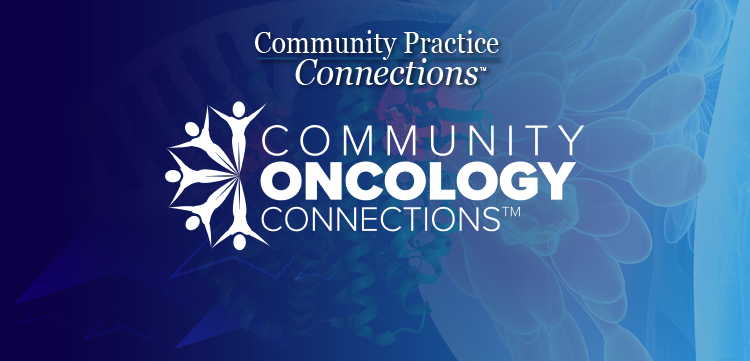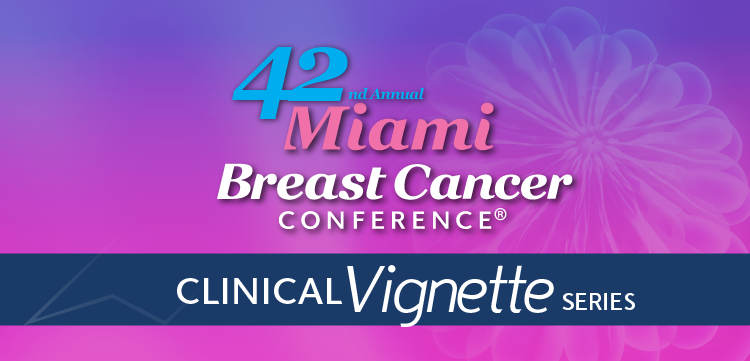
Treating Metastatic Breast Cancer After Endocrine Therapy and T-DXd
During a live event, Payal D. Shah, MD, discusses the case of a woman with metastatic breast cancer and the data for third-line sacituzumab govitecan.
CASE SUMMARY
- A 52-year-old postmenopausal woman with endocrine-refractory, metastatic (bone only), estrogen receptor–positive (85%), progesterone receptor–positive (65%), HER2 2+ immunohistochemistry/in situ hybridization (ISH)–negative breast cancer had progression 14 months after starting first-line fulvestrant plus ribociclib.
- Initial response to fulvestrant plus ribociclib noted on imaging at 3 months.
- Progression:
- New areas of bone involvement in T-spine, left ribs, and L2
- Circulating tumor DNA showed no actionable alterations.
- Trastuzumab deruxtecan (Enhertu; T-DXd) was initiated.
- The patient experienced moderate diarrhea and fatigue, with 2 temporary holds for neutropenia.
After 11 Months of T-DXd
- Chest/abdomen/pelvis CT and bone scan: 2 liver lesions, 1.8 cm and 2.4 cm; persistent bony metastases consistent with progressive disease; lung lesions too small to characterize, but in setting of other findings concerning for metastatic disease
Follow-Up Diagnostic Tests
- ECOG performance status: 1
- Laboratory profile: within normal limits
What next-line therapy do you recommend for this patient?
Targeted Oncology: What other options are there for this patient as second-line therapy?
Payal D. Shah, MD: In the second line for hormone receptor–positive, HER2-[positive/ISH] negative disease, the NCCN does list if you haven't used T-DXd, which in this case we did; that's also category 1 preferred.1 If they can't get T-DXd or if they've already received it, then the guidelines list sacituzumab govitecan [Trodelvy] as category 1, as well as systemic chemotherapy and then datopotamab deruxtecan [Datroway]. There were no wrong answers.... [For this patient], because of the efficacy of sacituzumab and because you want to treat patients when they're more able to tolerate, [it makes sense].
CASE UPDATE
- Sacituzumab govitecan is initiated.
- Best response of partial response observed, with further symptomatic improvement
- Patient maintained an absolute neutrophil count of 3,900/μL and white blood cell count of 7,800/μL.
Can you discuss the phase 3 data that led to the approval of sacituzumab for a patient with breast cancer such as this?
The TROPiCS-02 study [NCT03901339] looked at patients with hormone receptor–positive, HER2-negative breast cancer who progressed after at least 1 prior endocrine therapy, a CDK4/6 inhibitor, and a taxane.2 Patients had to have 2 to 4 lines of chemotherapy... for this pretreated population. Patients were randomly assigned to sacituzumab vs treatment of physician’s choice, which included eribulin, vinorelbine, capecitabine, or gemcitabine.... The primary end point was progression-free survival (PFS), and the usual secondary end points looking at tolerability and efficacy.
What was the efficacy seen in the TROPiCS-02 trial?
The study essentially showed a PFS benefit of sacituzumab that was maintained over time [HR, 0.65; 95% CI, 0.53-0.81; P = .0001].3 At 6 months, 12 months, and 18 months, there's still been a PFS benefit compared with treatment of physician’s choice that seems relatively maintained. I think also notable is the delta consistently seen [over time]. The 12-month PFS rate was 21.7%.... The final analysis looking at overall survival [OS], we do see an OS benefit as well [HR, 0.79; 95% CI, 0.65-0.96; P = .020].
When we look at the subgroup analysis, this is important because... [we're seeing patients with varying levels of] HER2-negative, HER2-low, or HER2-ultralow disease. So, what we're seeing is the same benefit in the patients who have HER2-low breast cancer who received sacituzumab [as those with HER2-negative disease].
How did patients do in terms of toxicity with sacituzumab?
The safety profile of TROPiCS-02 essentially showed 74% of patient had grade 3 or higher treatment-emergent adverse events with sacituzumab and 60% [did] with treatment of physician's choice. There were 66% of patients with a dose delay compared with 44% patients, respectively. There is some toxicity, but there were no [new] safety signals that emerged with initial follow-up.








































